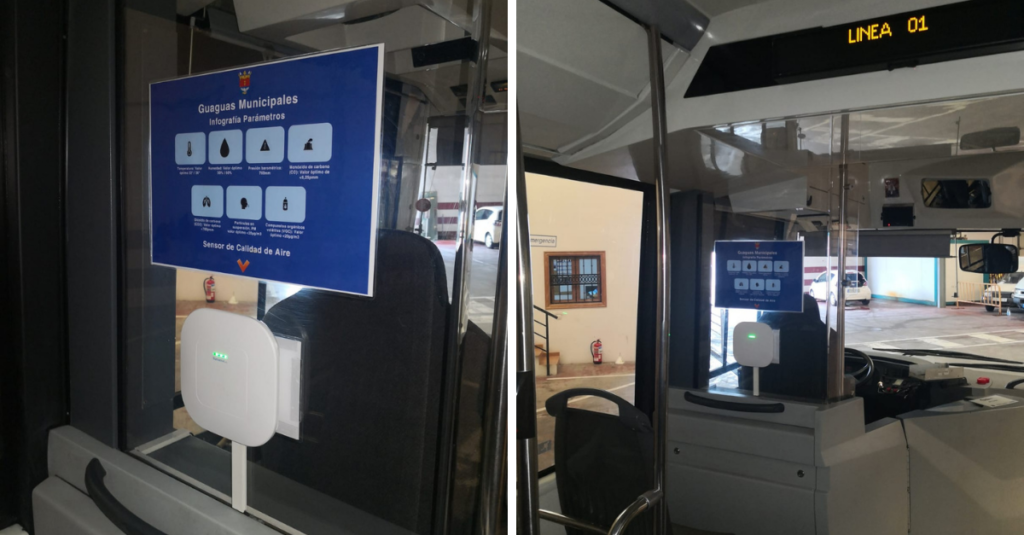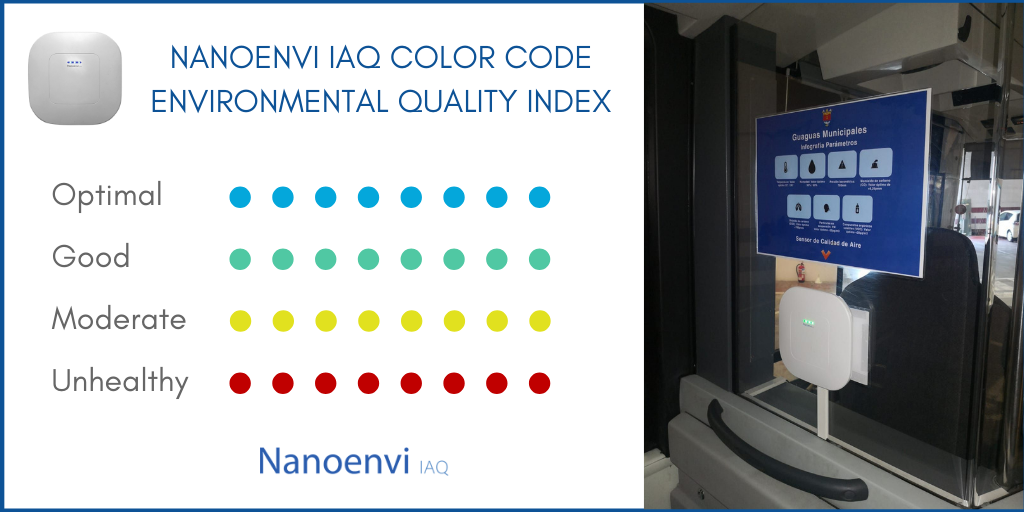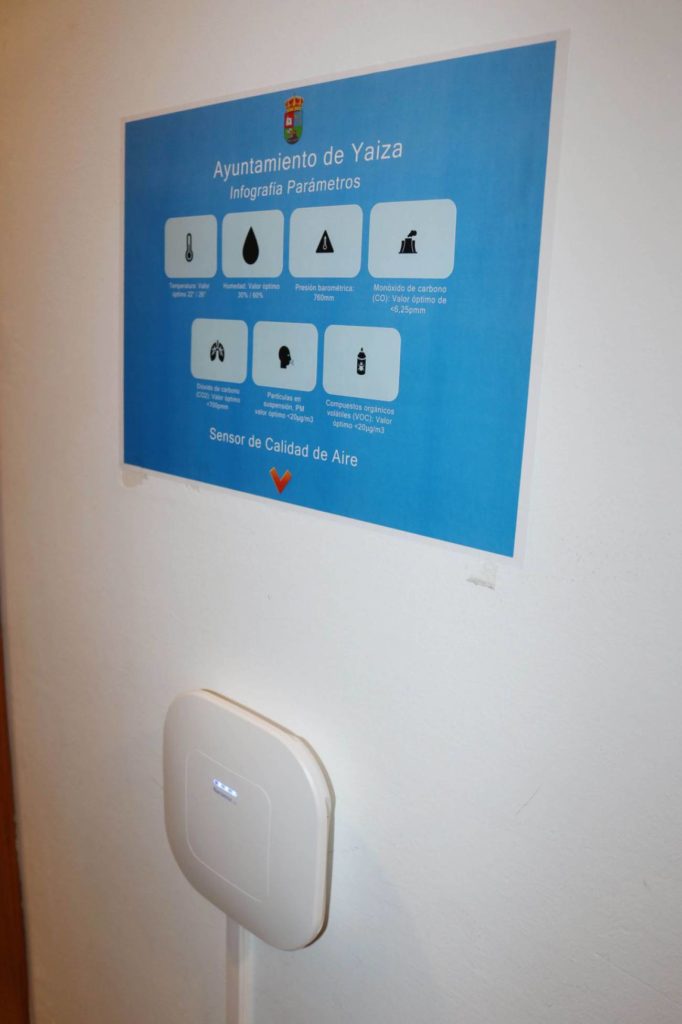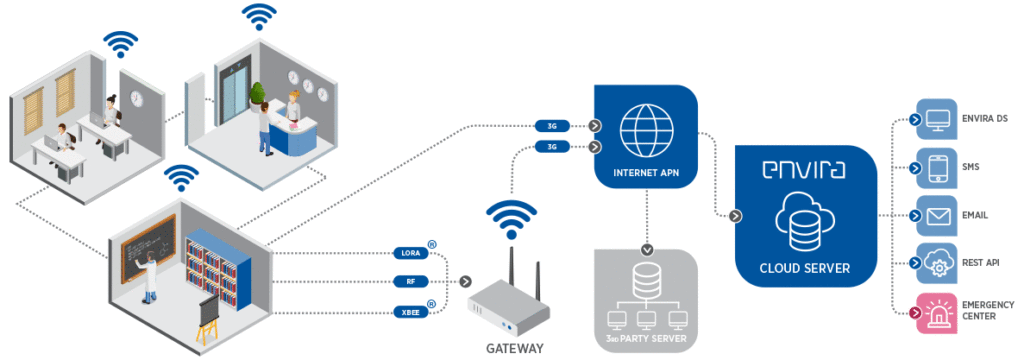Lanzarote has become a benchmark in the monitoring of indoor air quality in public spaces. An island sensorized and at the forefront of Internet of Things technology so that its citizens know how the air they breathe is like. The latest success of the collaboration between ENVIRA and Sistemas Ambientales Canarios, a distributor and partner in the area, has been the installation of the Nanoenvi IAQ devices in the municipal bus fleet, a pioneering project in the monitoring of indoor air quality in transport public.
From noise monitoring to indoor air quality
Sistemas Ambientales Canarios was founded in 2007 with the clear objective of offering a real solution to noise problems through consulting, training and acoustic inspection services. Listening to the needs of its customers for more than 14 years and its constant commitment to R + d + i has led them to diversify their activity and start a new path in the field of indoor air quality monitoring. To materialize this new commitment, it has established an alliance with ENVIRA for the distribution of Nanoenvi ® IAQ, a device that continuously monitors indoor air quality so that managers or owners of public spaces make decisions to improve health and well-being of people.
Monitoring public transport: a pioneering project
The union of ENVIRA and Sistemas Ambientales Canarios has made it possible to carry out a pioneering project: the monitoring of indoor air quality in public transport. Lanzarote’s bus fleet has been the first to install an indoor air quality monitoring device inside it so that passengers know how good the air they breathe is. The calculation of the ambient air quality index is carried out based on measurements of polluting parameters. Through a system of color codes, users can know how the quality of the air they breathe is during the journey.

Installation of Nanoenvi IAQ in urban buses in Lanzarote
The installed equipment monitors the parameters of:
- Carbon dioxide (CO2).
- Carbon monoxide (CO).
- PM10 and PM2.5 particles.
- Volatile organic compounds (VOCs).
- RH.
- Temperature.
- Atmospheric pressure.
Based on them, the device calculates an ambient air quality index that monitors the level of health and well-being in indoor spaces. Bus users will be able to know the quality of the air they breathe through color codes.
The possible values of the index move in the range 0-7, where
- 0-1 poor quality (red LEDs).
- 2-3 moderate quality (yellow LEDs).
- 4-6 good quality (green LEDs).
- 7 optimum quality (blue LEDs).

Environmental quality index color code of Nanoenvi IAQ
Identifying the main sources of pollution inside city buses will allow the council to design protocols to improve environmental comfort and the quality of the air that passengers breathe.
In this context in which the incidence of COVID-19 has increased public concern about the ventilation of closed spaces, monitoring of CO2 levels allows obtaining a key indicator to know the social distance and the ventilation rate. If the equipment begins to show inadequate air quality on a journey, the driver can take measures to renew the air, such as opening windows or activating the air conditioning.
ENVIRA, the equipment manufacturer company, is not the first time that it has carried out a monitoring project in bus fleets. In 2016, it designed a pioneering form of environmental monitoring in cities, integrating its on-board equipment technology in municipal vehicles. The objective was to monitor urban air quality in motion, on the road itself. This project was carried out in cities such as Madrid, Valencia, Tarragona, Gijón and Oslo, where the air quality sensorization platform embarked on service fleets was a success. At that time, this system already incorporated an indoor air quality module, although still in a very incipient phase.
Administration buildings and public schools also monitor indoor air quality
The strategic agreement between ENVIRA and Sistemas Ambientales Canarios has also materialized with the installation of indoor air quality monitoring devices in administration buildings, such as the Yaiza Local Police Headquarters, the Arrecife City Council or the Cabildo from Lanzarote, and also in schools such as CEIP Playa Blanca.

Installation of Nanoenvi IAQ in the Yaiza City Council
The purpose, like the bus fleet project, is to monitor indoor air quality to be able to analyze the indicators and act on them, thus following the recommendations established by the Ministry of Health to reduce the transmission of the Covid-19 through aerosols indoors.

How Nanoenvi IAQ devices work
The devices incorporate the previously mentioned wireless sensors (CO2, CO, VOCS, PM2.5, PM10, temperature, pressure and relative humidity) with a range of seventy square meters and also allow:
- Act on the basis of data whose traceability is assured.
- Establish alerts to prevent the spread of diseases or infections by air.
With this information they can communicate to both workers and users of the facilities where they are located how is the indoor air quality and the ventilation levels of the same.
Lanzarote has committed to the consolidation of a technological ecosystem in which the avant-garde, sustainability and efficient management of resources are protagonists thanks to projects and the implementation of innovative solutions such as that provided by the alliance between ENVIRA and Canary Environmental Systems.











